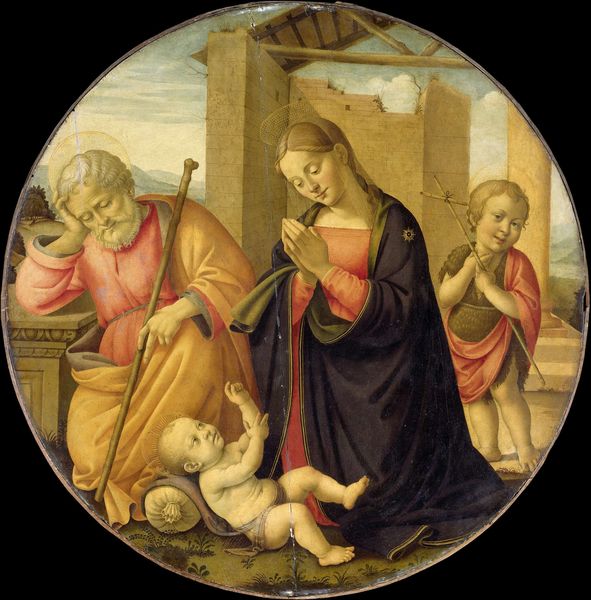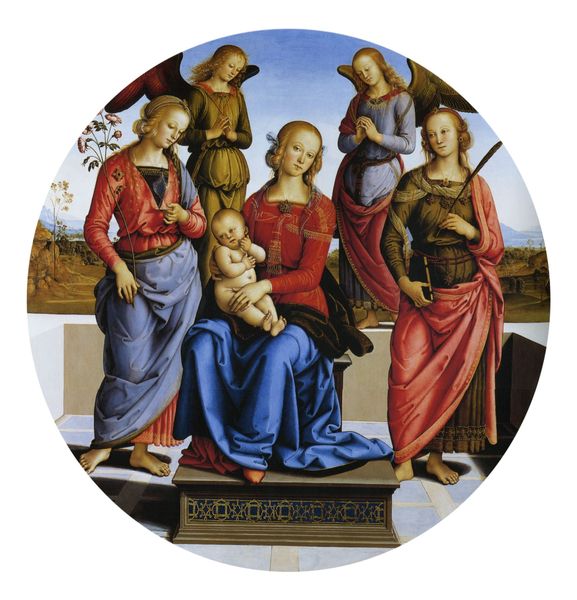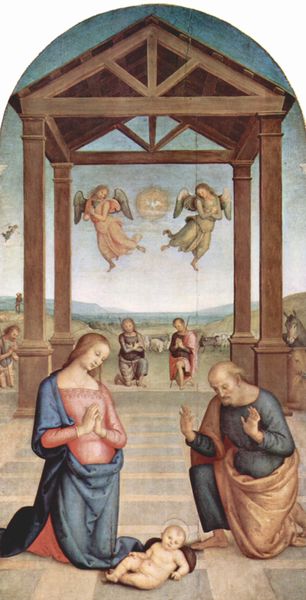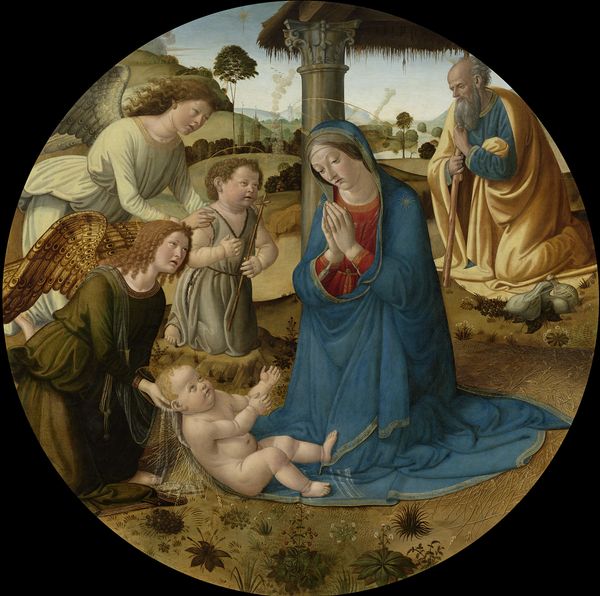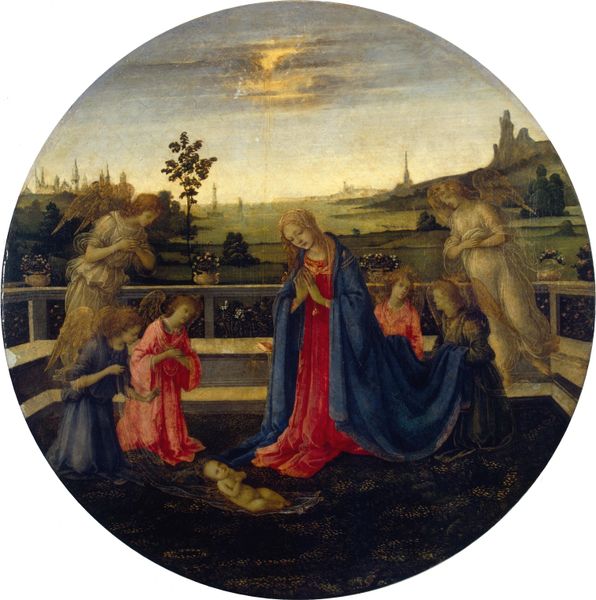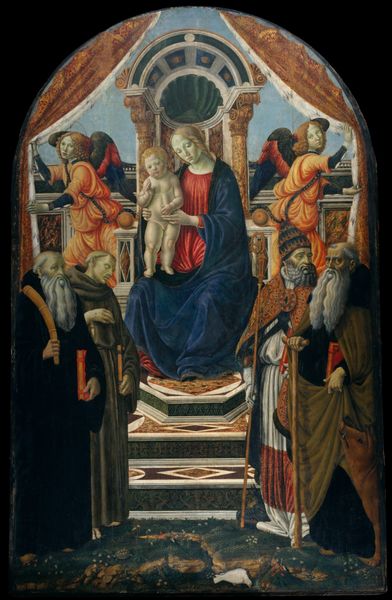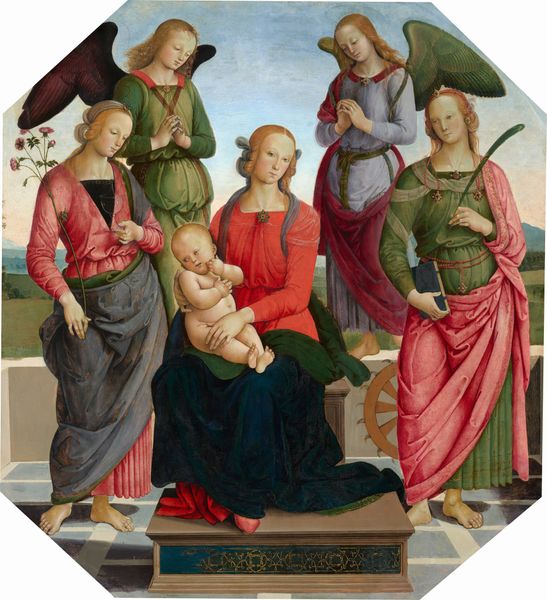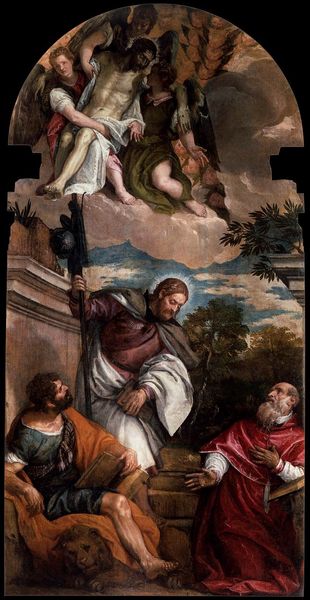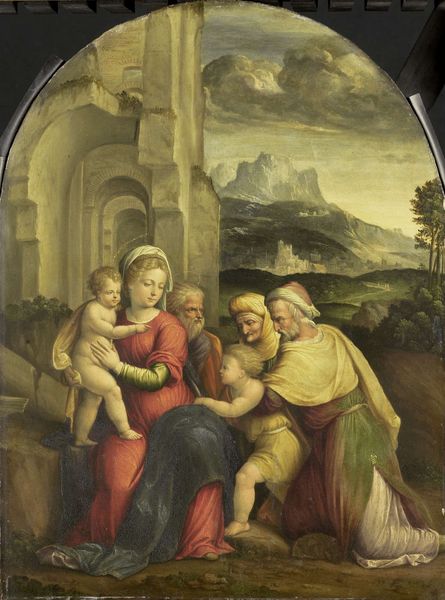
painting, oil-paint
#
portrait
#
painting
#
oil-paint
#
figuration
#
oil painting
#
earthy tone
#
underpainting
#
history-painting
#
italian-renaissance
#
early-renaissance
Copyright: Public Domain: Artvee
Editor: This is Sandro Botticelli’s "Virgin and Child with Two Angels," painted between 1485 and 1495, using oil paints. I find it serene, yet there's also a strange formality to the figures. What strikes you most about it? Curator: What interests me is how Botticelli negotiates the politics of imagery. Think about the historical context. Florence, at the time, was deeply influenced by religious figures. The placement of this work, perhaps in a private home, and its reception would've been carefully considered. The circular "tondo" shape, and the intimate gathering of holy figures framed within, speak to a visual vocabulary carefully tailored for domestic devotion. Editor: So, it was meant for personal worship? How does that change our understanding? Curator: It moves our interpretation from the purely aesthetic to the socio-political. How does this function within a wealthy patron's home? Does the tondo shape enhance its appeal to this specific audience, like a prized possession mirroring one's affluence? Or did it reinforce civic values? The very act of commissioning such a piece becomes a statement. Editor: It’s like a carefully crafted symbol of both faith and status. I never considered it that way. Are the angels symbolic? Curator: Indeed. Notice their expressions and poses. Are they truly joyful, or is there a hint of something else? Consider their ambiguous positioning. How are they serving to amplify the central figures while acknowledging potential viewership and patronage? Editor: It's like a visual dance between the sacred and the societal, shaped by where and for whom it was created. It adds so many layers to unpack. Curator: Exactly. Analyzing it from a historical perspective unveils those power dynamics embedded in the very fabric of its creation. It's about understanding art's active role in shaping cultural values. Editor: Thanks, I’ll never look at a Botticelli the same way!
Comments
No comments
Be the first to comment and join the conversation on the ultimate creative platform.
